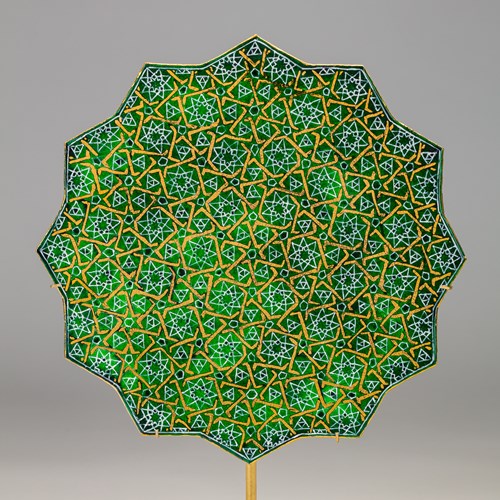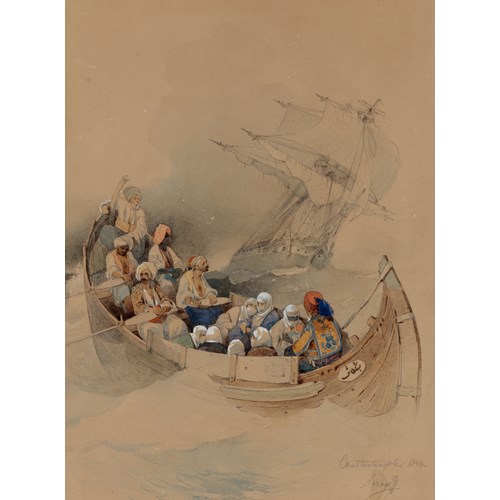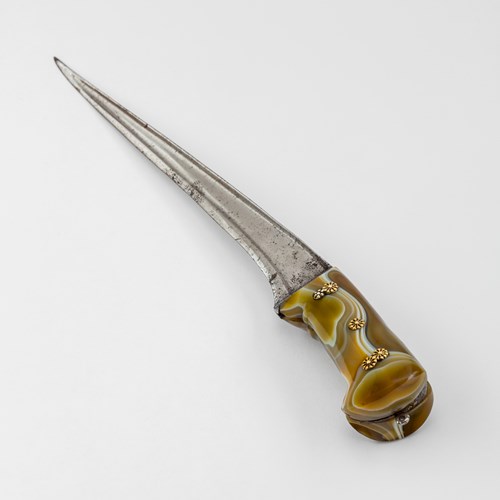Marketplace
Gold Inlaid Shield Bosses
Gold Inlaid Shield Bosses
Epoque 17th - 18th century
Origine India (Deccan)
Medium Steel with gold inlay
These four bosses are made of steel with gold inlay, and each originally adorned an Indian dàhl (shield). They are decorated with the inscriptions of the 99 Names of God, with the central bosses surrounded by leaves; the flanges (outer edges) are star shaped. The bosses had a practical function, that of concealing the rivets protruding from the interior of the shield, where the handgrips were fastened. Painted portraits of the Mughal period show rulers and noblemen holding weapons and shields, the latter depicted in black and gold.
Notes:
India excelled in damascening, the inlay and the outlay of steel with precious, usually gold decoration. Manuel Keene, Treasury of the World. Jewelled Arts of India in the Age of the Mughals, London, 2001. p. 86. See also catalogue entry 7.7 on page 89.
Salman Kaoukji, Precious Indian Weapons and Other Princely Accoutrements, London, 2017.
Stock no.: A2957a
Notes:
India excelled in damascening, the inlay and the outlay of steel with precious, usually gold decoration. Manuel Keene, Treasury of the World. Jewelled Arts of India in the Age of the Mughals, London, 2001. p. 86. See also catalogue entry 7.7 on page 89.
Salman Kaoukji, Precious Indian Weapons and Other Princely Accoutrements, London, 2017.
Stock no.: A2957a
Epoque: 17th - 18th century
Origine: India (Deccan)
Medium: Steel with gold inlay
Plus d'œuvres d'art de la Galerie




 Beasts of Paradise_T638206163539708147.jpg?width=500&height=500&mode=pad&scale=both&qlt=90&format=jpg)




